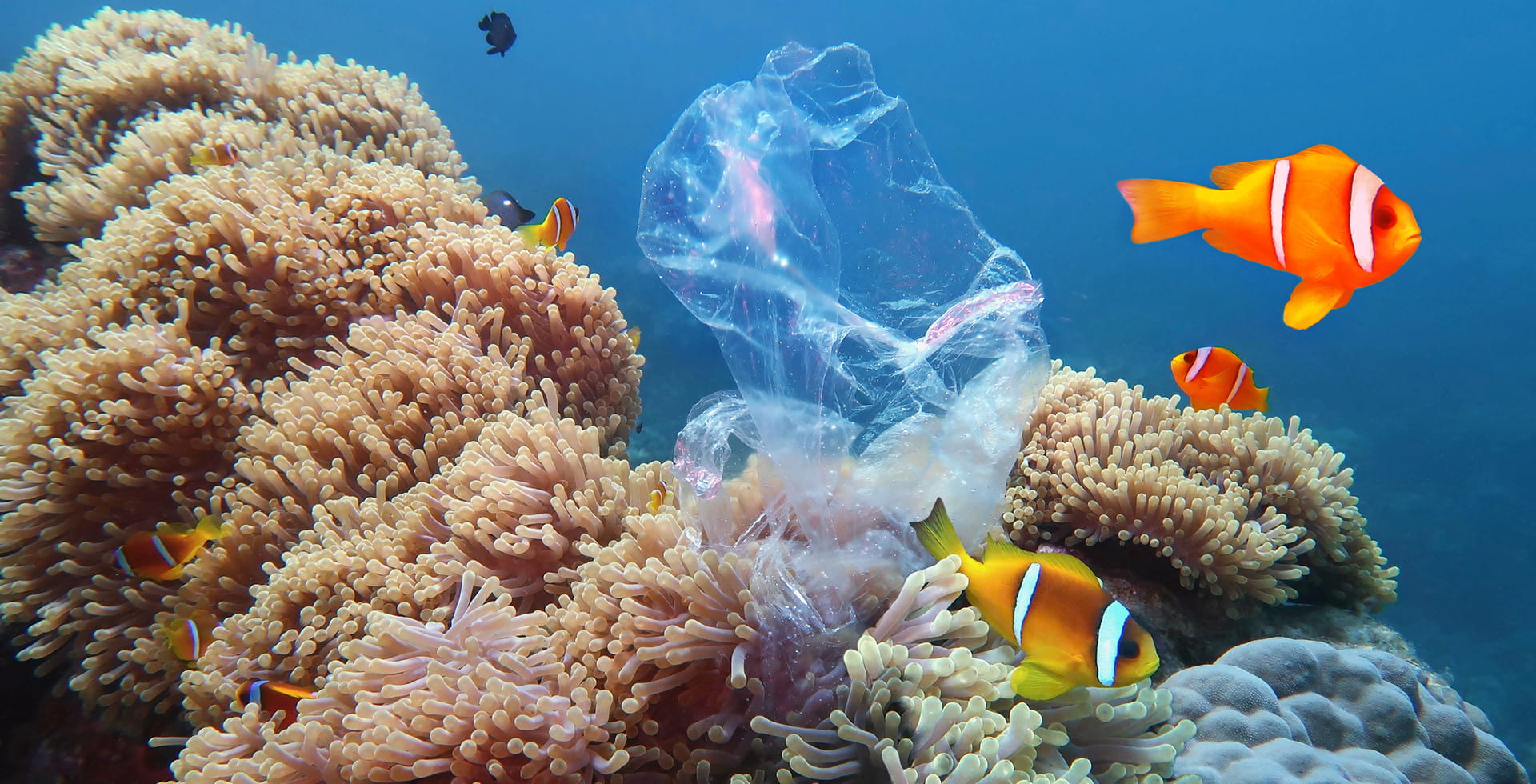Thinking outside the box: sustainable packaging is good business

Summary
One urgent issue crosses multiple UN Sustainable Development Goals: reducing the vast amount of waste the world creates. Moving from plastic to sustainable packaging would mark a great leap forward – and many corporations are already doing their part. This gives investors a way to support the drive for less wasteful consumption and a cleaner planet.
Key takeaways:
- Plastic packaging is one of the largest sources of waste in the world: it’s cheap and effective, but only 14% is collected for recycling and it’s difficult to recycle plastic more than once
- A global move towards sustainable packaging would reduce waste, maximise efficiency and align with several UN SDGs that focus on building a cleaner planet
- The sustainable-packaging market is expected to grow from USD 246 billion in 2018 to almost USD 413 billion by 2027
- Consumer surveys show broad support for eco-friendly packaging, and legislators from the UK to Kenya are making commitments towards supporting sustainable-packaging goals
Building a sustainable planet requires making the global economy more “circular” – one that is restorative and regenerative, not destructive and disposable. This requires eliminating excessive waste and emphasising reusing, remanufacturing and recycling the materials we use every day.
But what if waste were never created in the first place? Addressing the problem of plastic packaging could help eliminate one of the largest sources of waste in the world:
- Plastic packaging is cheap and effective – but it has an average lifespan of only six months, and we recycle only around 14%.1
- Due to additional value losses during sorting and reprocessing, only about 5% is reused for packaging while most of the remaining 9% is used for lower-value applications. That means approximately USD 80 billion to USD 120 billion worth of plastic packaging leaves the economy (in the form of waste) every year.2
- Plastic packaging contributes almost USD 40 billion worth of greenhouse gas emissions and other environmental problems every year.3
Sustainable packaging can be a solution – and an investment opportunity
Since only a small amount of plastic is eventually recycled, and since it is difficult to recycle plastic more than once, plastic recycling alone can’t be a long-term solution for building a circular economy. Nor would it be possible to reduce consumption enough (and thereby reduce packaging) without drastically slowing the global economy. Focusing on sustainable packaging, on the other hand, would help limit the volume of reduce plastic waste quite effectively.
So what is sustainable packaging? It involves rethinking the packaging of goods all along the supply chain – from design to transportation to consumption – with the goal of reducing waste and maximising efficiency while minimising negative side effects. This is, of course, easier said than done. But if investors and industries could align and find a solution, the benefits would be enormous.
Creating a sustainable-packaging model would also align with several of the United Nations Sustainable Development Goals (SDGs) that focus on building a cleaner planet for the future.
- SDG 12 (Responsible Consumption & Production) emphasises waste generation through prevention and the concept of “reduce, reuse, recycle”.
- Targets associated with SDG 6 (Clean Water & Sanitation) and SDG 11 (Sustainable Cities & Communities) focus on ensuring clean sanitation and building sustainable communities by reducing the environmental impact on cities through effective waste management, including waste disposal.
- Building a cleaner planet relates directly to SDG 14 (Life below Water) and SDG 15 (Life on Land), which both focus on protecting marine, coastal, terrestrial and inland freshwater ecosystems.
The sustainable-packaging market is expected to grow from USD 246 billion in 2018 to almost USD 413 billion by 2027 – a 6.2% annual growth rate.4 Notably, several corporations are stepping up their efforts in new ways:
|
Sustainable packaging is supported by consumer demand and government legislation
In a recent consumer survey by Boston Consulting Group, almost three-quarters of 15,000 respondents said they would pay more for products with environmentally friendly packaging, and nearly one-fourth would pay an additional 10% or more. More than two-thirds of respondents also said sustainable packaging was an important factor in their purchasing decisions.5 Legislators are taking action as well. The European Union, for example, has committed itself to ensuring that all packaging is recyclable and reusable by 2030.6 Kenya is also among one of the many developing nations that are banning various forms of disposable packaging; Kenya’s ban on the production, import, sale or use of single-use plastic containers went into effect in June 2020.
However, sustainable packaging will only be truly viable with international cooperation, a broad-based change in people’s behaviour and sufficient investment. One of the best-case scenarios for funding the necessary infrastructure required to redesign packaging that is reusable, recyclable or compostable would cost approximately USD 30 billion per year.7 But the packaging and consumer goods companies that adjust their business models early will likely be beneficiaries of this trend. For investors, this provides a significant opportunity not only to seek attractive investment returns from companies seeking sustainable-packaging solutions, but to support the sustainable goals that will lead us to a circular economy and a cleaner planet.
Kofi Tweneboa-Kodua
Portfolio Manager, Global Thematic Equity
 |
About the United Nations Sustainable Development Goals The United Nations Sustainable Development Goals are 17 goals that were adopted by all United Nations Member States in 2015 as part of the 2030 Agenda for Sustainable Development, which set out a 15-year plan to achieve the goals. The UN SDGs address a range of social needs, including education, health, social protection and job opportunities, while tackling climate change and environmental protection. They serve as a framework to promote prosperity while protecting the planet to achieve a better and more sustainable future for all. |
How to invest in education?

Summary
Achieving any of the United Nations Sustainable Development Goals will require significant investment from the public and private sector – particularly SDG 4 (Quality Education). Fortunately, private industry is stepping up, providing more ways for investors to help improve the education system, reduce poverty and promote sustainable growth – all while seeking attractive returns.
Key takeaways:
- Education is critical for economic growth, but change is needed everywhere: developing countries need better access, developed countries need to reduce costs, and employers need better-skilled workers
- Promoting quality education requires tremendous investment from public institutions and private capital; in return, investors get both growth potential and the chance to improve the world they live in
- Investing in education aligns with several important UN Sustainable Development Goals, including SDG 4 (Quality Education), SDG 1 (No Poverty), SDG 8 (Decent Work and Economic Growth) and SDG 10 (Reduced Inequalities)









